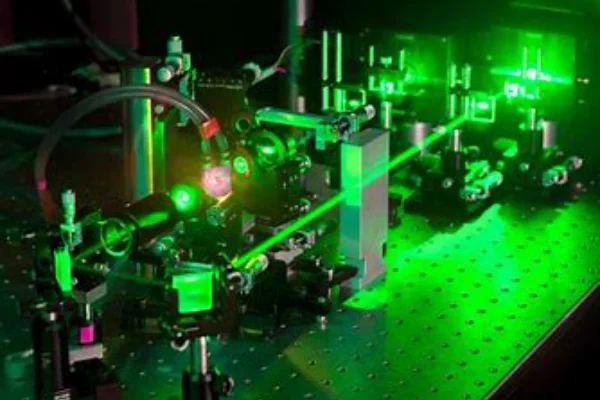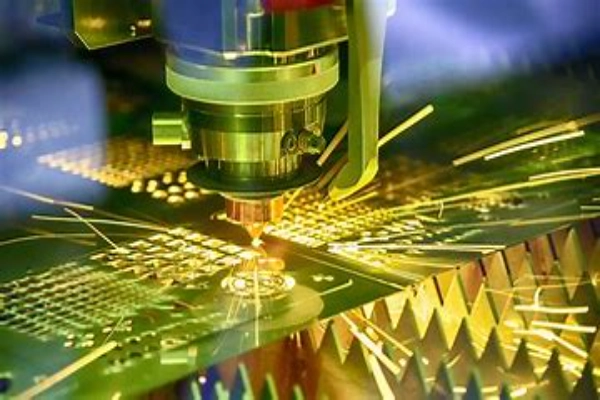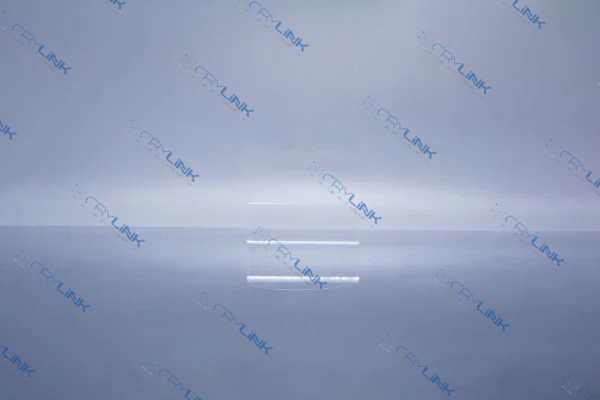Introduction to Multiband Solid-State Laser
In recent years, the realm of photonics has witnessed significant advancements, particularly in the domain of multiband solid-state lasers. These laser are distinctive because they emit at multiple wavelengths, providing an array of opportunities for diverse applications ranging from medical therapy to nonlinear optics, and material processing. At the heart of these lasers are specialized crystals such as Yb:KGW and Alexandrite, which play pivotal roles in their operation.

The Rise of Multiband Lasers in the World of Photonics and Their Impact on Medical Therapy
In the dynamic landscape of technology, there is an ever-growing thirst for innovative tools that cater to the multifaceted needs of various industries. One such groundbreaking advancement that has captivated the attention of researchers and professionals alike is the multiband laser. With the profound ability to combine distinct wavelengths, multiband lasers have reshaped the face of photonics, offering capabilities that were once thought to be distant dreams.
As the name suggests, multiband laser are not confined to a singular wavelength. Instead, they offer a spectrum of wavelengths, a feature that stands as their biggest asset. This multifarious nature of multiband lasers empowers them with unmatched precision. Whether it’s targeting specific energy levels or addressing unique tasks, these laser have the flexibility to adapt and deliver.
Imagine the realm of possibilities when one can seamlessly toggle between wavelengths, tailoring their approach to the task at hand. This adaptability is not just about versatility; it’s about efficiency. Rather than employing multiple laser for different requirements, a singular multiband laser can be harnessed, streamlining processes and conserving resources.
But what has propelled multiband lasers to their current stature in the world of photonics? The answer lies in the synergy of various technological drivers. Crystal growth technology, for instance, has seen monumental strides. As crystals form the heart of these laser, advancements in their cultivation directly translate to enhanced laser capabilities. Complementing this is the evolution of high-quality dielectric mirror coatings.
These coatings play a pivotal role in directing and amplifying the laser beams, ensuring that the emitted light is of the highest caliber. Further amplifying the prowess of multiband lasers is the integration of advanced pumping techniques, which enhance the power and efficiency of these lasers. When these technological marvels converge, the boundaries of what multiband lasers can achieve are pushed, opening doors to new horizons.
Taking a leap from photonics to the world of medicine, the impact of multiband laser becomes even more palpable. The medical domain, with its intricate procedures and the need for precision, stands as an ideal playground for these lasers. Dermatology, for example, has been revolutionized with the advent of multiband lasers. Skin, with its complex layers and myriad conditions, requires a treatment approach that’s both precise and adaptable. With the ability to harness different wavelengths, multiband laser offer dermatologists a tool that can target everything from vascular lesions to pigmented disorders with unparalleled accuracy. Such precision not only ensures effective treatment but also minimizes potential side effects, elevating patient care standards.
But it’s not just skin that benefits. The delicate world of ophthalmology, where the margin for error is minimal, has found a trusted ally in multiband lasers. Eye surgeries, known for their intricate nature, demand tools that offer precision without compromise. Multiband laser, with their capability to adjust wavelengths, enhance surgical accuracy. This means reduced risks, minimized potential complications, and outcomes that resonate with the ultimate goal of every medical professional – ensuring the well-being of the patient.
In essence, the rise of multiband lasers in photonics marks a significant chapter in the annals of technology and medicine. With their unmatched versatility, precision, and the promise of future advancements, they stand as beacons of innovation, illuminating paths to a brighter, more efficient future.

Expanding Horizons with Multiband Lasers: From Nonlinear Optics to Material Processing and the Pivotal Role of Crystals
In the vast and intricate domain of optics, the introduction of multiband lasers has signaled a new era of innovation and potential. Especially pronounced is their role in nonlinear optics, a specialized field that diverges from the linear properties of optics, wherein the response of the medium is directly proportional to the light’s intensity.
Multiband laser, distinguished by their ability to emit high-intensity pulses across varied wavelengths, have positioned themselves as indispensable tools in this realm. Their uniqueness doesn’t just stop at emitting multiple wavelengths; it extends to their capacity to facilitate frequency conversion processes. This is a game-changer, as it leads to the generation of novel frequencies, propelling the scope of advanced optical studies into uncharted territories.
Parallel to the advancements in nonlinear optics, the arena of material processing has also felt the transformative impact of multiband lasers. Materials, in their vast diversity, have unique molecular structures, which means they each resonate distinctively to different wavelengths of light. Herein lies the beauty of multiband lasers. By providing an array of wavelengths, these lasers can be fine-tuned to the specific needs of a material. This capability translates into enhanced efficiency in processing. Rather than a one-size-fits-all approach, professionals can now tailor their techniques, optimizing for the best results, and significantly increasing throughput.
But this tailored approach doesn’t just bolster efficiency; it dramatically refines accuracy. In material processing, heat is a double-edged sword. While necessary for tasks like cutting or shaping, it can also introduce complications, especially around heat-affected zones. These zones can compromise the integrity of materials, especially those that are delicate or sensitive. With the precision of specific wavelengths that multiband lasers bring to the table, these heat-affected zones are minimized. This nuance in control ensures that intricate work on materials, be it a delicate fabric or a sensitive semiconductor, can be conducted with finesse, preserving their innate properties.

But what empowers these multiband laser to function with such versatility and precision? The answer rests within the very heart of these lasers: their crystalline components. Crystals, in their organized structure, have the unique ability to interact with light in ways that amplify, focus, or alter its properties. Among the plethora of crystals used in laser technology, Ytterbium-doped potassium gadolinium tungstate, often abbreviated to Yb:KGW, has surged in prominence. Its widespread recognition stems from its broad emission spectrum, which is exceptionally conducive for multiband lasing. Every pulse, every beam that emerges from a laser using this crystal, carries with it the diverse potential of multiple wavelengths.
Yet, in the pantheon of crystals integral to laser technology, Alexandrite claims a special position. Characterized by its tunable lasing properties, this crystal isn’t just about a wide range of wavelengths. It’s about flexibility, adaptability, and the ability to be tailored to specific needs, echoing the very essence of multiband lasers. When used in laser assemblies, Alexandrite ensures that the laser’s output can be modulated across a spectrum, fostering the very production and efficiency of multiband lasers.
In conclusion, as we gaze upon the future of optics, material processing, and photonics at large, it’s evident that multiband lasers, with their versatile capabilities, are set to redefine the landscape. Bolstered by the power and potential of crystals like Yb:KGW and Alexandrite, these lasers promise a horizon where precision, efficiency, and adaptability converge, heralding a brighter future for industries and research alike.

Future Outlook and Developments
The trajectory of multiband solid-state lasers is unmistakably ascending, driven by relentless research and cutting-edge technological evolution. As we peer into the future, it’s evident that their scope will extend far beyond their current applications. The medical field, already benefiting from the precision and adaptability of these lasers, stands at the cusp of a revolution. Anticipate medical devices that not only enhance therapeutic procedures but also integrate seamlessly into diagnostic methodologies, making interventions more timely and outcomes more favorable.
Beyond medicine, the entertainment sector is ripe for disruption. Imagine immersive experiences where multiband lasers contribute to visual spectacles, creating multi-dimensional light shows or enhancing the fidelity of holographic displays. The communication domain too isn’t far behind. As data transmission demands grow, multiband lasers could pave the way for faster, more secure optical communication channels, bridging distances with light-speed efficiency. In essence, as we journey forward, the multifaceted potential of multiband lasers assures a future where innovation knows no bounds, and possibilities are limitless.

Conclusion
The world of multiband solid-state lasers is vast and filled with potential. As the synergy between crystals like Yb:KGW and Alexandrite and advanced laser technology strengthens, the possibilities seem endless. Whether it’s revolutionizing medical treatments or pushing the boundaries of optical studies, these lasers are at the forefront, promising a brighter, more efficient future.
FAQs
- What makes multiband lasers different from regular lasers?
Multiband lasers can emit light at multiple wavelengths, offering versatility in various applications. - Why are Yb:KGW and Alexandrite crystals essential for multiband lasers?
These crystals support a wide range of wavelengths, making them crucial for the production of multiband lasers. - How do multiband lasers enhance medical treatments?
They allow for increased precision in targeting specific tissues, leading to better patient outcomes and reduced risks. - In what ways are multiband lasers used in material processing?
They offer tailored processing by using specific wavelengths best suited for the material in question, ensuring efficiency and precision. - Can we expect more advancements in multiband laser technology in the future?
Absolutely. With ongoing research and technological developments, the capabilities and applications of multiband lasers will only grow.

Frank
Frank graduated from the University of Shanghai for Science and Technology, majoring in optics. As a technical engineer at Crylink Company, he deeply understands crystal materials and laser components.
Related Video(s) with this Article
Related Product(s) with this Article
Related Application(s) with this Article

